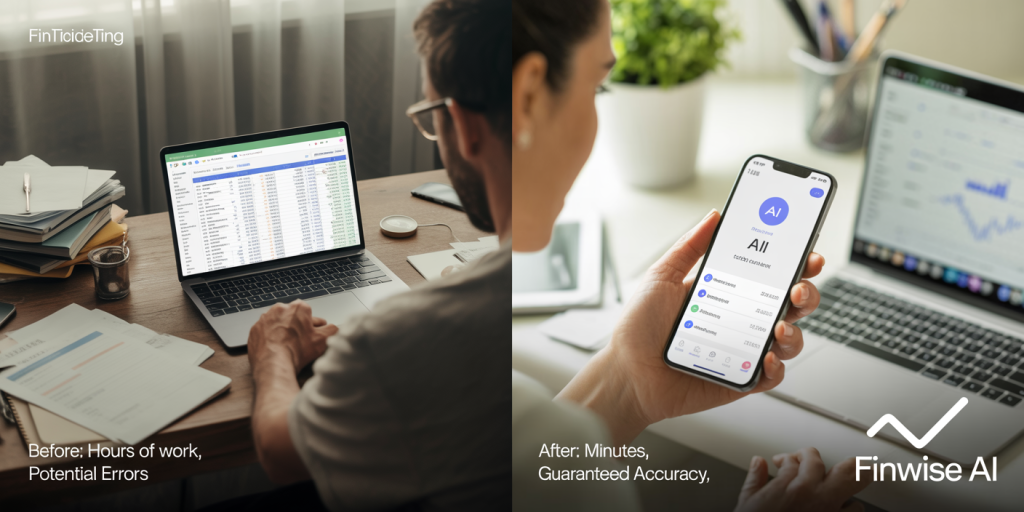Managing personal finances effectively requires a thorough review of income, expenses, and savings every month. Traditional budget reviews, however, are often time-consuming and prone to human error. With the rapid advancement of artificial intelligence (AI), automating monthly budget reviews has become a practical solution to enhance financial decision-making, accuracy, and efficiency. This article explores actionable ways to leverage AI for automating your monthly budget review while highlighting key tools, benefits, and future trends.
The Growing Importance of Automating Budget Reviews
Financial health depends largely on consistent monitoring and adjusting of budgets. According to a 2023 report by the National Endowment for Financial Education, 60% of Americans do not review their budgets regularly, leading to missed savings opportunities and untracked expenses. Time constraints and lack of financial literacy are significant contributing factors.

AI-driven automation transforms budget reviews from a tedious manual task into an intelligent, continuous process. Unlike spreadsheet-based reviews or manual tracking, AI systems analyze vast amounts of financial data in real time, detect anomalies, and offer personalized recommendations. For example, services like Cleo and YNAB have started integrating AI modules that predict spending trends based on past behavior, allowing users to adjust budgets before overspending occurs.
Choosing the Right AI Tools for Budget Automation
Selecting the appropriate AI-enabled software or app is critical to maximizing the benefits of budget automation. Various applications offer different functionalities such as expense categorization, cash flow forecasting, and anomaly detection.
Expense Categorization and Tracking
AI excels in classifying transactions into categories such as groceries, utilities, entertainment, and more. For instance, Mint uses machine learning algorithms to automatically tag transactions with 90-95% accuracy, reducing manual data entry. This helps users understand exactly where their money is going without laboriously categorizing each input.
A comparative table below illustrates features of popular AI-enabled budget apps:
| App | AI Features | Accuracy in Categorization | Budget Forecasting | Integration with Banks | Cost |
|---|---|---|---|---|---|
| Mint | ML-based expense classification | 95% | Basic Forecasting | Yes | Free |
| YNAB | Predictive budgeting | 90% | Advanced Forecasting | Limited | $14.99/mo |
| Cleo | Chatbot budgeting assistant | 85% | Spending Insights | Yes | Freemium |
| PocketGuard | AI spending alerts | 92% | Moderate Forecasting | Yes | Free/$4.99 |
These tools employ natural language processing (NLP) to interpret transaction descriptions and machine learning models trained on large financial datasets to continuously improve categorization.
Cash Flow Forecasting and Alerts
Advanced AI tools not only track but also forecast future income and expenses by analyzing historical patterns. For example, Emma, a finance management app, uses AI to predict when users might run low on funds and sends real-time alerts to avoid overdraft fees. This predictive power is invaluable in preempting financial stress.
Data from a 2022 survey revealed that users of AI-powered forecasting apps were 30% more likely to avoid overdraft fees than those relying on manual budgeting. This statistic underscores the effectiveness of AI in proactive budget management.
Practical Steps to Implement AI in Monthly Budget Reviews
To make the most of AI in automating your monthly budget review, it’s essential to follow structured steps:
Step 1: Data Consolidation
Gather all relevant financial data streams—bank accounts, credit cards, bills, and investments—into one platform. Most AI budgeting tools support APIs to automatically sync with financial institutions securely. This eliminates manual data entry and ensures up-to-date information is available for analysis.
Step 2: Customize Categories and Rules

Although AI handles categorization efficiently, customizing categories and setting rules specific to your lifestyle, such as separating dining-out from groceries, improves insights. Tools like YNAB encourage such customization to help match budgeting to personal goals.
Step 3: Set Alerts and Goals
Configure alerts for unusual spending, upcoming bills, or forecasted budget shortfalls. Set saving goals or limits on specific categories (e.g., entertainment capped at $200/month) so the AI can monitor progress and advise accordingly.
Step 4: Review and Adjust Monthly
Leverage AI-generated insights during a brief monthly review. Look for flagged anomalies, unexpected expenses, or opportunities for saving. Use AI’s recommendations to adjust your budget for the next period, ensuring continuous improvement.
For example, a user might notice that AI flagged repeated minor subscriptions draining $30 monthly. Canceling these subscriptions after an informed review could save $360 annually with minimal effort.
Real-World Case Study: AI Driving Savings for a Freelancer
Meet Jessica, a freelance graphic designer with irregular income and multiple project-based payments. Leveraging AI-driven budget tools, she automated her monthly finances to better manage cash flow.
Jessica uses an AI-enabled app that consolidates all her bank accounts and payment platforms. The AI detects her income fluctuations and forecasts periods when cash reserves might dip below a critical threshold. It automatically sets aside buffer amounts and alerts her when it identifies inconsistent spending patterns toward client entertainment.
Within six months of implementation, Jessica increased her emergency fund by 20% and reduced impulsive expenses by 15%. The automated review process freed up an average of 3 hours monthly, which she spent on creative work rather than manual bookkeeping. Her experience exemplifies the transformative potential of AI in personalized budget management.
Comparing Traditional vs. AI-Driven Budget Reviews
Understanding the tangible benefits of AI automation becomes easier when comparing traditional budgeting methods with AI-powered approaches across key factors:
| Aspect | Traditional Budgeting | AI-Driven Budgeting |
|---|---|---|
| Time Investment | 4-6 hours/month manually inputting and analyzing | 30-60 minutes reviewing AI summaries |
| Accuracy | Prone to human errors | Automated categorization with >90% accuracy |
| Customization | Manual adjustments required | Adaptive personalization through machine learning |
| Forecasting | Based on estimations and guesswork | Data-driven predictive analytics |
| Alerts and Insights | Requires manual monitoring | Proactive real-time notifications |
| Cost Savings | Potentially missed due to oversight | Improved savings via anomaly detection |
This comparison highlights why 70% of early adopters report feeling more in control of their finances when using AI-driven tools (source: Deloitte Financial Automation Survey, 2023).
Data Privacy and Security Considerations
While AI offers substantial advantages, users must be diligent about data privacy risks. Financial apps aggregate sensitive data, making security paramount. Leading tools employ bank-level encryption (AES-256), multi-factor authentication, and regulatory compliance (e.g., GDPR, CCPA).
Before adopting any AI budget tool, verify its security protocols and terms of data usage. Opt for software that anonymizes data and offers transparency on data sharing. Regularly update passwords and monitor account activities to mitigate potential risks.
Future Perspectives: The Evolution of AI in Financial Management
Looking ahead, AI’s integration in personal finance will deepen, propelled by advancements in natural language processing, predictive analytics, and blockchain technology. Emerging AI models will offer hyper-personalized insights by analyzing broader data sources such as social trends, macroeconomic indicators, and behavioral cues.
Voice-activated AI assistants could soon conduct budget reviews interactively, answering queries, proposing adjustments, and negotiating bill payments autonomously. Furthermore, AI could integrate with financial wellness platforms to provide holistic services including credit management, investment advice, and retirement planning.
According to a 2024 Markets and Markets forecast, the AI in personal finance market is expected to grow at a CAGR of 26.5%, reaching $15 billion by 2030. This growth signals an era where intelligent financial automation becomes indispensable for both individuals and businesses.

Financial institutions are collaborating with AI startups to co-create smarter budgeting tools, ensuring broader accessibility and affordability. The democratization of AI financial tools promises improved financial literacy and stability across diverse demographic groups globally.
Embracing Automation for Financial Confidence
Automating your monthly budget review with AI is no longer a futuristic concept but a practical step towards achieving financial clarity and control. By harnessing powerful machine learning algorithms, real-time data syncing, and predictive analytics, individuals can transform budgeting from a chore into a seamless, insightful process.
Adopting AI tools empowers users to identify hidden spending patterns, forecast cash flow accurately, and make informed adjustments proactively. As AI technology advances, its role in personal finance will expand, offering even deeper personalization and integration with other financial management areas.
With careful selection of secure, AI-enabled budget applications and commitment to regular review practices, users can maximize their financial wellbeing while freeing up time and minimizing stress. Embrace AI-driven automation today, and step confidently into the future of smart personal finance management.

Deixe um comentário